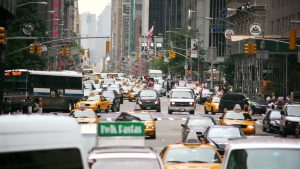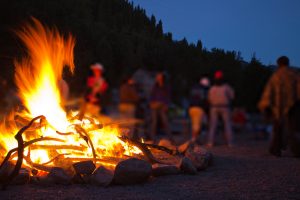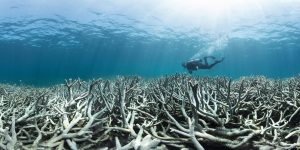9/4/2017 Reflection:
Monday’s class was interesting, to say the least. Had someone told me that I would be creating a minute thirty documentary about a politically charged topic such as DACA, I wouldn’t have believed it. The idea of being in front of a camera talking about anything is intimidating, add in that I would be talking about a topic I am not well versed in and it seemed impossible to me, but in hindsight was an amazing experience. I learned things about my four group members faster in that three-hour class then I could have imaged. It surprised me to see how all of our traits worked so well together. We all had weaknesses that were complemented by another one of our strength, making this stressful assignment a little less stressful. I believe I was able to learn about my group mates strengths and insecurities because the situation forced us to be vulnerable almost immediately. I would say the hardest part about this project was balancing what we wanted to put in our video versus what we had to put in the video in order to get a good grade. In our mind, Andrea was our story that we wanted to highlight but everyone in the group had to be on tape. What we grappled for most of the editing process was how can we utilize the other members of the group to heighten Andrea’s story. See we all wanted to A, but at one point in editing, we saw the story loose its impact because of such grade requirements. While it was hard in the end, our group was able to work with all the confines of the assignment to create what we thought was an intense 90-second video. It warmed my heart when Luke pulled Andrea aside to tell her that her story is amazing and he wanted to acknowledge that even in the midst of getting this assignment in on time. I was really proud of our final product because everyone was so candid and encouraging.
I thought it was interesting how a lot of the other groups chose the pet option and while they did have the same topic all of the videos had its own direction. Even though those films were had the same topic none of them felt repetitive because they had their own twist on the subject.
Week 9/28/2017 Blog post.
As a documentarian, I’d say that I am still young, with little experience. Which makes answering these questions intimidating. I question if I am qualified to even talk about what I want to document, how often I want to, and what I get from it because I have so little experience. What I can do is talk out what I intend to do, what I think I will get out of it, and who I hope to touch the world. I would like to document like the guys in grizzly man because his passion for the subject was very apparent.
I hope to combine all my passions through documentation. I want to be able to show raw scientific evidence for climate change, species extinction, and genetic variation decline in a way that no matter what discipline you are you have impacted you and will understand the problem. From biologist to teachers, to financial analyst, I want to inspire all to take action. I hope to show that there is no other excuse for the things that are happening to our planet, we cannot sit by and just wonder what is going to happen in 2100, we have to be certain.
As a biology major, I see everything from the deer in your back yard to the fungi under your porch to the coral in the sea as alive contributing to everyday life. This makes issue such as global warming and species extinction mean more to me then maybe another audience member. With documentaries, biologists can reach a wider audience and be able to show, in more tangible ways, that these issues are not only real but also need to be paid attention to. A lot of people know of conservation biology but don’t know that it is a crisis discipline that often won’t have all the information before action is necessary, that’s why getting what is known out to the public is important. Hopefully, through documentaries Biologist can make this clear and hopefully convince skeptics to take action.
During the thirty-minute frame exercise, you could say I felt uncomfortable. Not only was I walking around campus with a piece of cardboard up to my face but I was also uncomfortable because I saw how the frame really does matter. How big or small the change is can alter how the audience sees the scene. It was interesting to think about how the shot can be manipulated to show part of the story or the full story, giving the director a lot of power.





